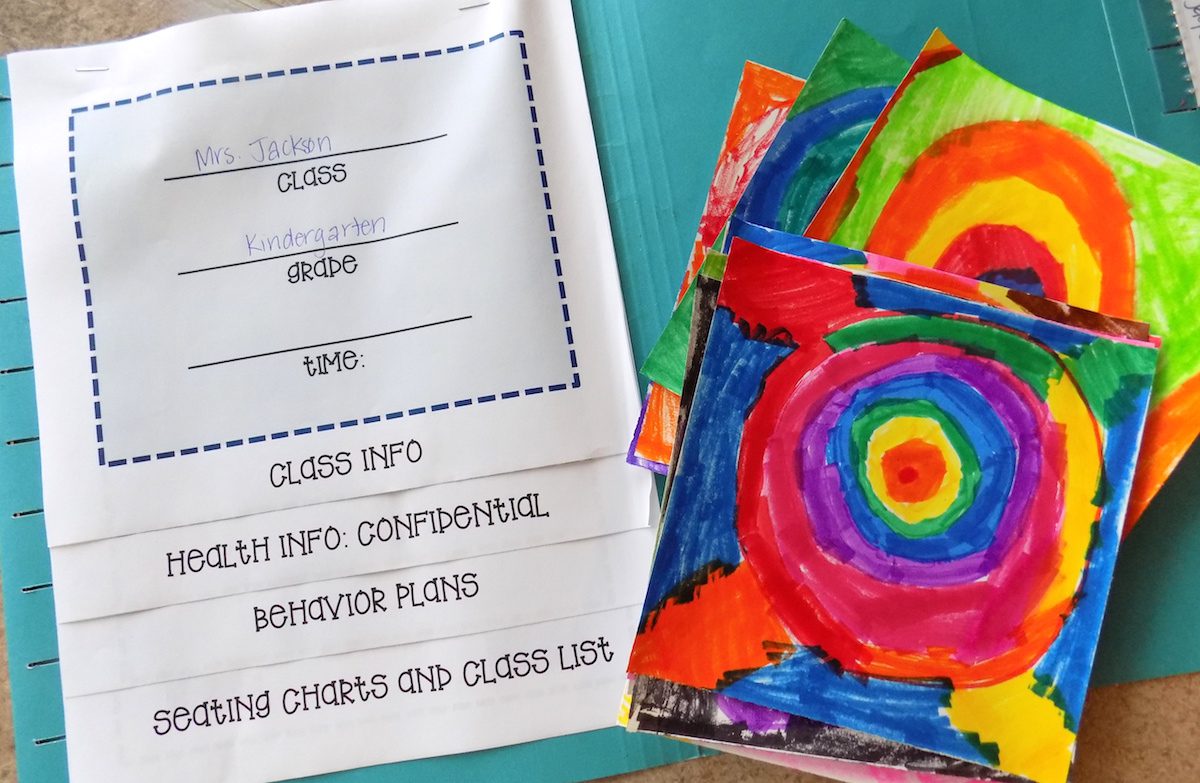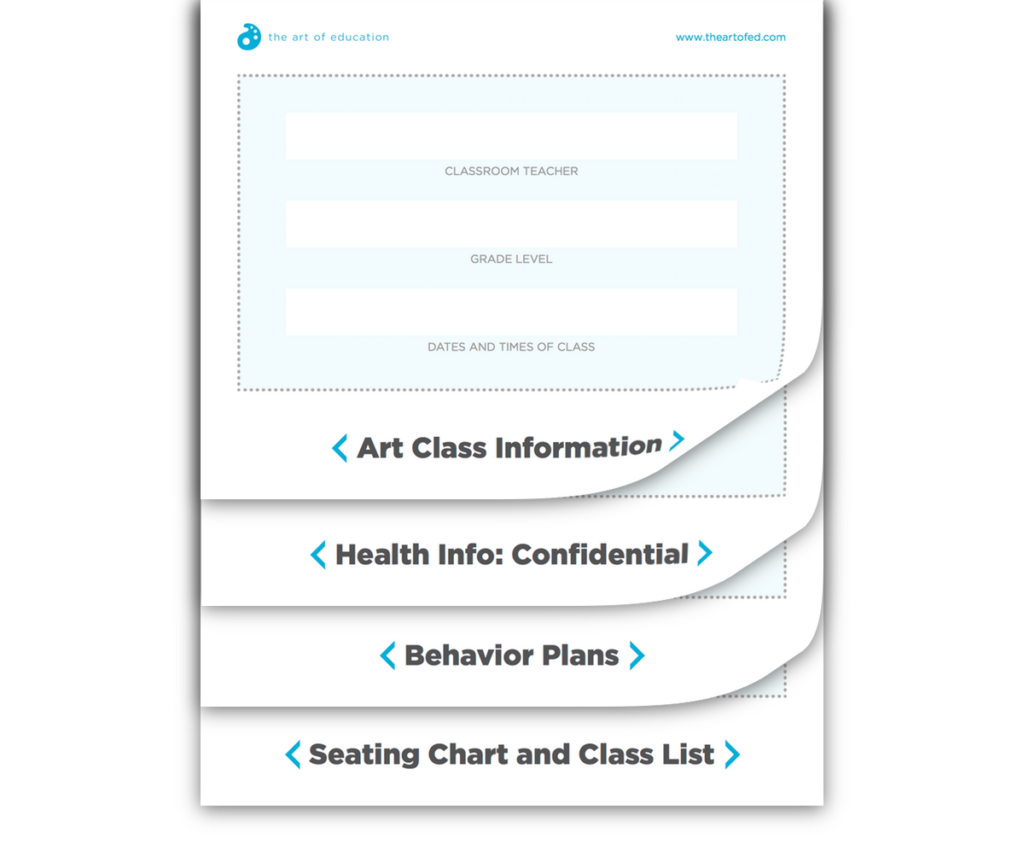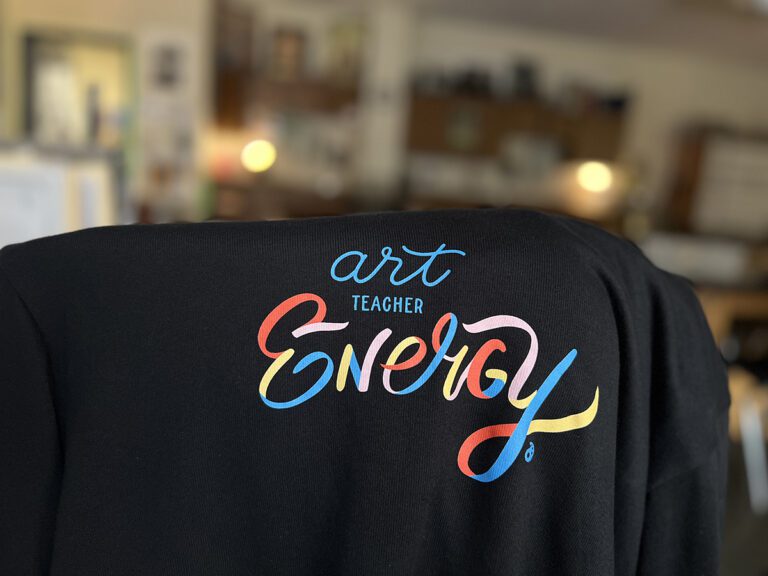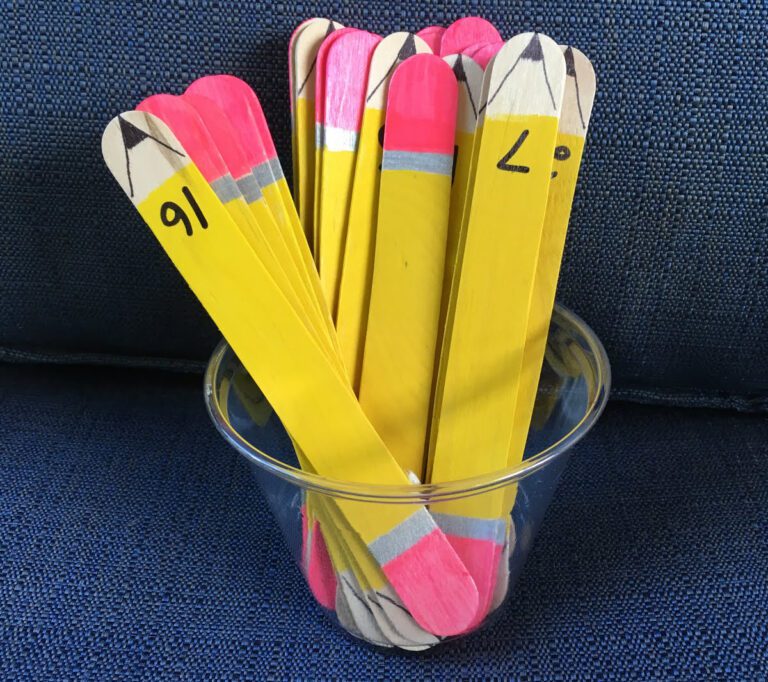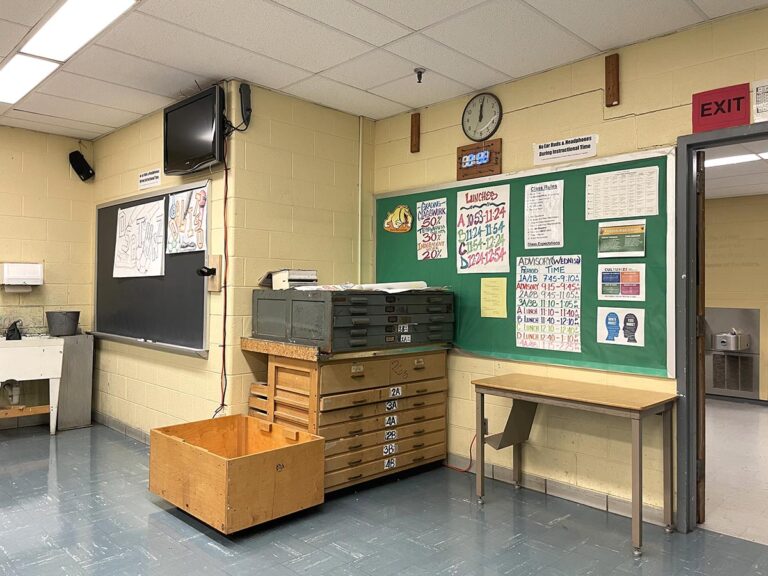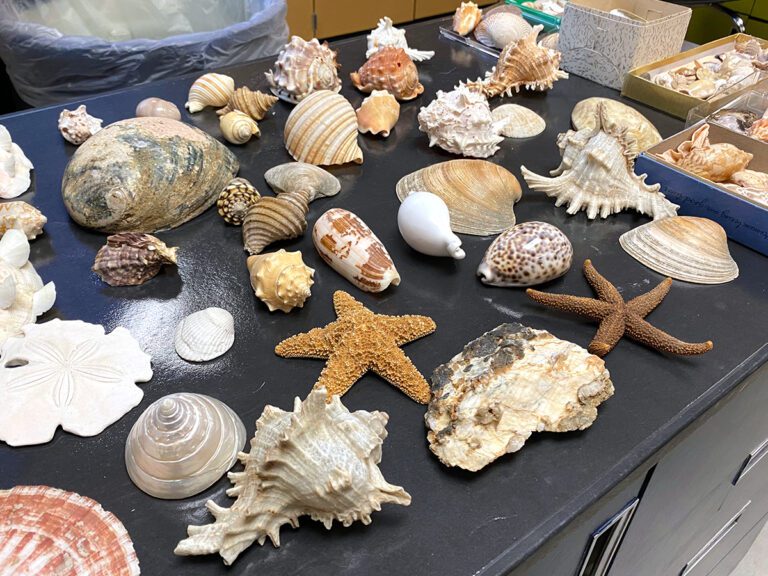As an art teacher, you have way more student information to keep track of compared to the typical classroom teacher. You are responsible for knowing all about your students’ Individualized Education Plans, 504 plans, behavior plans, and instructional accommodations and adaptations. But, instead of thirty students, you have hundreds!
So how is an art teacher supposed to keep track of all of these things?
This fall, try streamlining your information organization system by creating tabbed class folders in 5 easy steps!
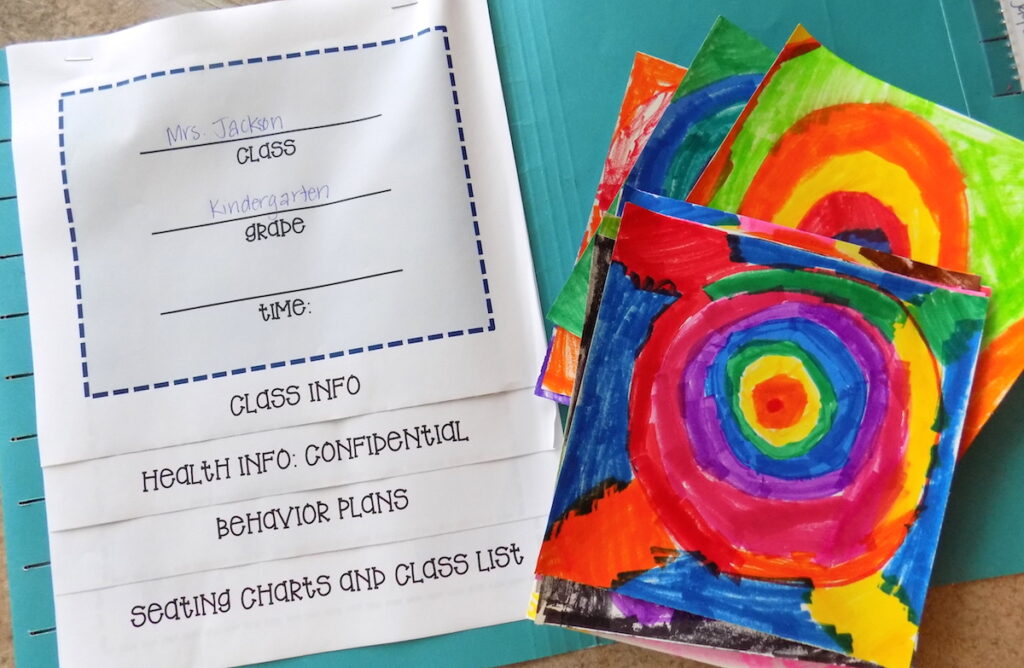
Step 1: Research Your District’s Policy
Districts and states have varying policies about how you can record and keep confidential health or academic information. Prior to making your folders, be sure your plan aligns with what your administrator considers to be best practice for maintaining student confidentiality.
Step 2: Gather Supplies
To create an effective class folder system, you will need several items…
- File folders (of whatever variety you use)
- The tabbed printable download below
- Applicable class rosters/information
- A paper cutter (or scissors)
- A stapler
The download below will allow you to easily set up your folders. Grab yours now!
Step 3: Assemble
Creating the folder is easy and fairly straightforward.
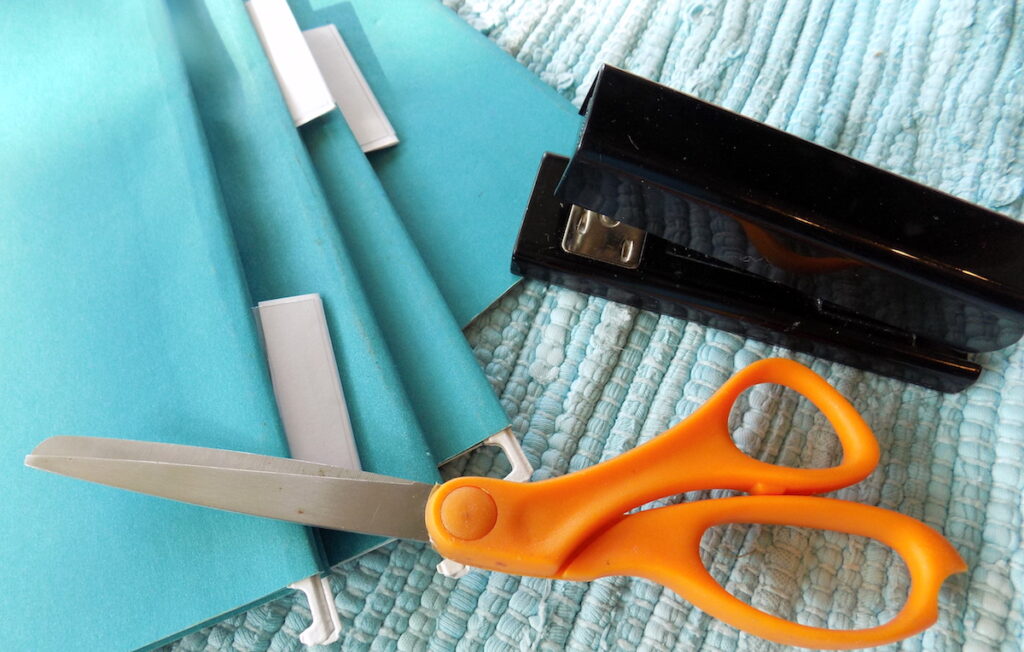
- Cut each paper from the downloadable resource on the dotted line, creating the layered tabs.
- Stack them together and straighten across the top edge.
- Staple the paper stack to the folder at the top, creating the hinged layers.
- Now you are ready to record all the necessary student information!
Step 4: Write/Record
Use your seating charts and student data to complete the folders.
Start with the basics, such as your class rosters and seating charts. As your school provides you with IEP’s and 504’s review and store them as you normally would. Then, distill the essential information from those documents into a phrase you can record in the folder.
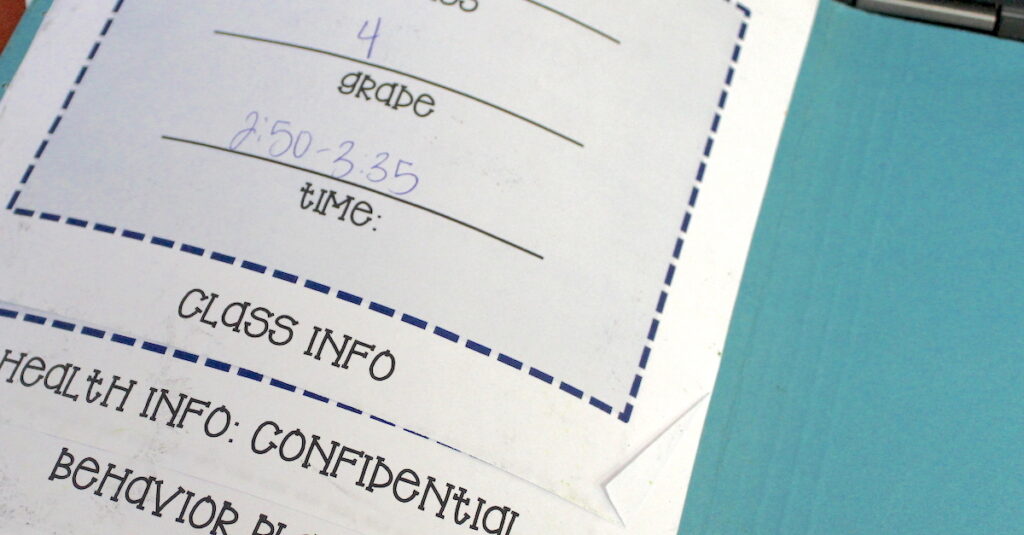
For example, a student’s Individual Education Plan may require preferential seating or testing accommodations, so jot that note in the class folder for your daily use. Or, perhaps a diabetic student’s 504 allows for snacks and frequent trips to the nurse for testing. This can also be noted in the folder, so it is at the forefront of your mind each time the student is in your classroom.
As the school year progresses, you can also add behavior logs and behavior plans as students receive them. Frequently, students from differing classrooms use different tools for behavior tracking. Having this information with the class folder will become invaluable.
If you are especially ambitious, you can even make space to record anecdotal information about student interests, strengths, and artistic challenges. Having a deep knowledge of your students’ personal interests can only serve to improve your instruction.
Step 5: Stay Professional
As you collect and record information in your folder system, be aware that FOIA (The Freedom of Information Act) applies to written records, as well as digital documents. This means, if you work at a public school, all student records (including class folders) are likely open to public request. So, as you make notes in your class folder, remember to stick to facts (not opinions) and to use professional language you would be proud to share.
Class folders are an effective strategy because they help you keep the essential information about your students organized in one easy place. Even better, these folders can be used to communicate important information with a substitute teacher. Give them a try this year and see what you think!
How do you organize student information in your classroom?
What strategies do you use for sharing “need to know” student information with substitutes?
Magazine articles and podcasts are opinions of professional education contributors and do not necessarily represent the position of the Art of Education University (AOEU) or its academic offerings. Contributors use terms in the way they are most often talked about in the scope of their educational experiences.
